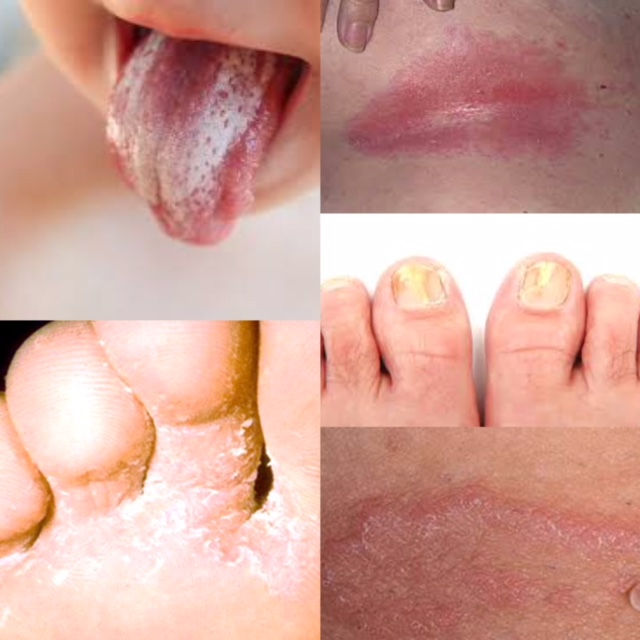Prevent Candida Overgrowth A common culprit of fatigue, sugar craving, rash, brain fog, and more.
- Tiffanie Jones ND

- May 14, 2018
- 3 min read
Updated: May 30, 2018

Live blood analysis example of candida overgrowth in between red blood cells.
Would you like to see if you have candida overgrowth?
Schedule a Naturopathic appointment that includes blood analysis.
It is normal to find yeast and fungus in healthy adults. Candida is a type of yeast. Problems arise when there is overgrowth in the system.
Factors that lead to Candida overgrowth:
Taking antibiotics (without replacing probiotics).
Oral contraceptives (1)
Diabetes (eating a diet high in sugar and refined carbohydrates)
Excess alcohol intake
High stress levels
A weakened immune system
Transmission can happen between sexual partners
Common symptoms associated with Candida overgrowth:
1. Fatigue
2. Recurrent vaginal and urinary tract infections
3. Sinus infections
4. Digestive issues
5. Skin and nail fungal infections
6. Joint pain/Arthritis
7. Oral Thrush
What yeast and fungal overgrowth looks like....

Candida species, are present in the gut of 70% of healthy adults (2). Excess Candida enters the bloodstream and has been found to infect joints and cause arthritis (3). Damage to the gut and joints can be prevented by limiting the favorite foods (excess sugar and simple carbohydrates) that contribute to replication of yeast and fungus. Often excess sugar is coming into the diet and we do not realize it. Keep an eye on labels and try to stay under 20 grams a day.
How to limit candida overgrowth:
-Stick to the basics (consume moderate protein, essential fats, and vegetables)
-Limit excess fruit consumption that can contribute to fungal overgrowth.
-Incorporate more anti-fungals such as coconut oil and garlic.
-Increase probiotic sources that help to normailze the population
(low sugar, cultured foods)
-Consider proteolytic enzymes break up and reduce the population in the body.
Apart from limiting the favorite food of yeast/fungus and increasing antifungal foods,
proteolytic enzymes are taken on an empty stomach to work systemically.
The cell walls of candida are made up chitin and proteins (4). Chitin is described as cellulose (a polysaccharide). Cellulase enzymes break cellulose molecules and protease helps to break proteins found in the cell walls of candida. Many find protease and cellulase to be an effective way to normalize populations of candida in the system and report little to no die off or Herxheimer effect using enzymes. Often people also report reduced sugar cravings.
Friendly bacteria "probiotics" have been found to prevent overgrowth of candida and biofilms that contribute to irritable bowel syndrome (5).
In local health food stores you can find:
Enzymedica Pro-Bio, a 10 billion multistrain probiotic supplement along with Enzymedica Candidase which is a great combination to help normalize the population of candida in the body.


At Holistic Fitness, we stock Enzymedica Pro-Bio along with Enzyme Science Candida Control. Enzyme Science Candida Control is a professional line that contains a higher concentration of enzymes, 1 billion probiotics, and broccoli seed extract to support detoxification.


Do you miss having a health food store in Webster Groves, MO?
Just down the hill at Holistic Fitness, we stock local companies such as Nuwati Herbals products (teas, salves, soap, bug repellents), Blissoma facial care products, along with Enzymedica organic produce based multivitamins and other supplements to support overall health.
Need help optimizing health and improving vitality?
For personalized care, schedule a Naturopathic consult with Dr Tiffanie Jones.
Live blood analysis is included during the visit to detect overgrowth of organisms such as candida.
Sources:
1. Apisarnthanarax P; Self SJ; Ramer G; Montes LF . Oral contraceptives and candidiasis. Cutaneous Medicine for the Practitioner. 1974 Jul; 14(1):77-82.
2. Schultze, Jurgen. Yeasts in the gut: From Commnesals to Infectious Agents. Dtsch Arztebl Int. 2009 Dec; 106(51-52): 837–842.
3. Gamaletsou, Maria N, et al. Candida Arthritis: Analysis of 112 Pediatric and Adult Cases. Open Forum Infect Dis. 2016 Jan https://www.ncbi.nlm.nih.gov/pmc/articles/PMC4742637/
4. J Ruiz-Herrera, et al. Molecular organization of the cell wall of Candida albicans and its relation to pathogenicity. FEMS Yeast Research. 2006; 6: 14–29.
5. Matsubara, Victor et al. Probiotics as Antifungals in Mucosal Candidiasis. Clinical Infectious Diseases, Volume 62, Issue 9, 1 May 2016, Pages 1143–1153
*These statements have not been evaluated by the food and drug administration. This is not intended to diagnose, treat, cure, or prevent disease.




Comments